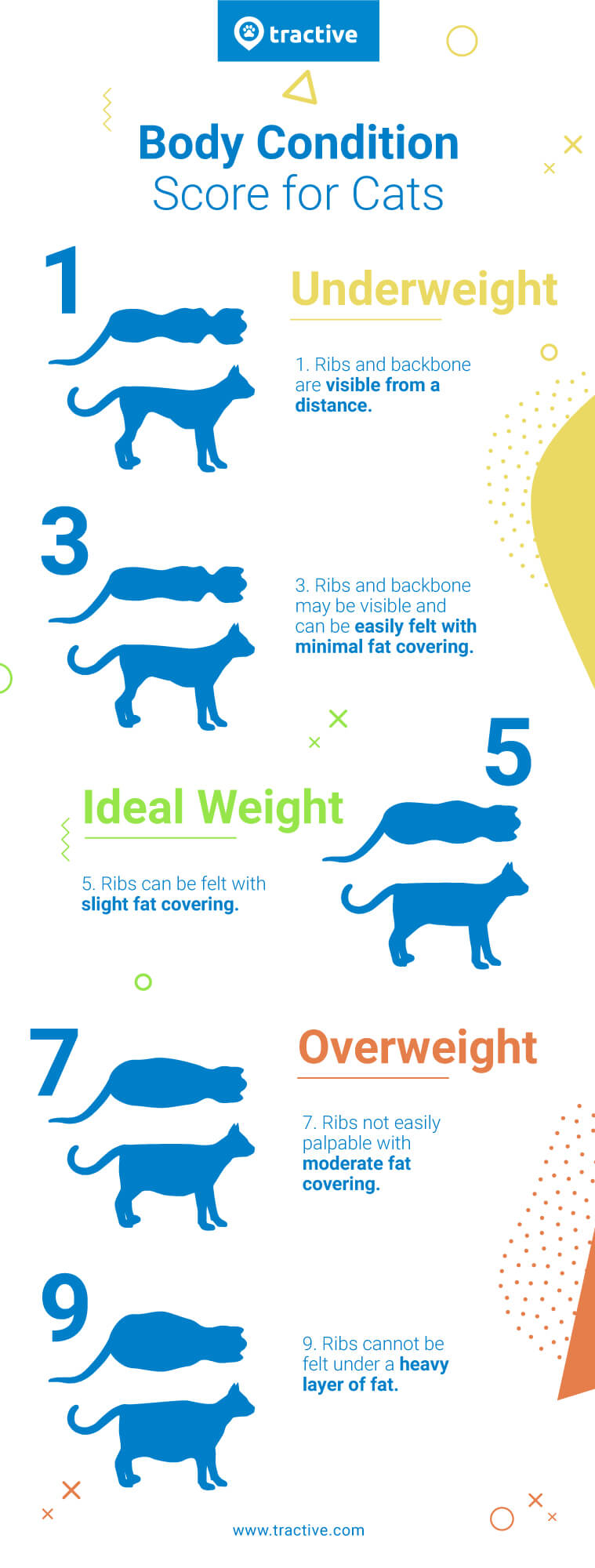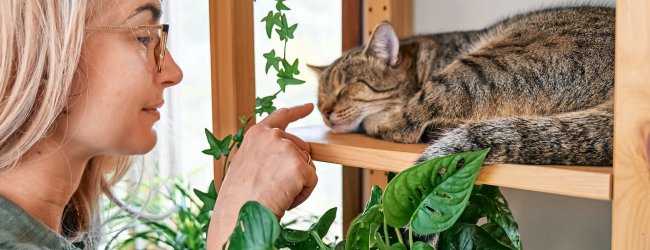Cat Body Condition Score: Is Your Cat Underweight Or Overweight?
Need help figuring out if your cat is too skinny, a bit overweight, or just right? Using the Cat Body Condition Score, you can check on your cat's physical shape and find out if it might be time to make adjustments to their diet or lifestyle.
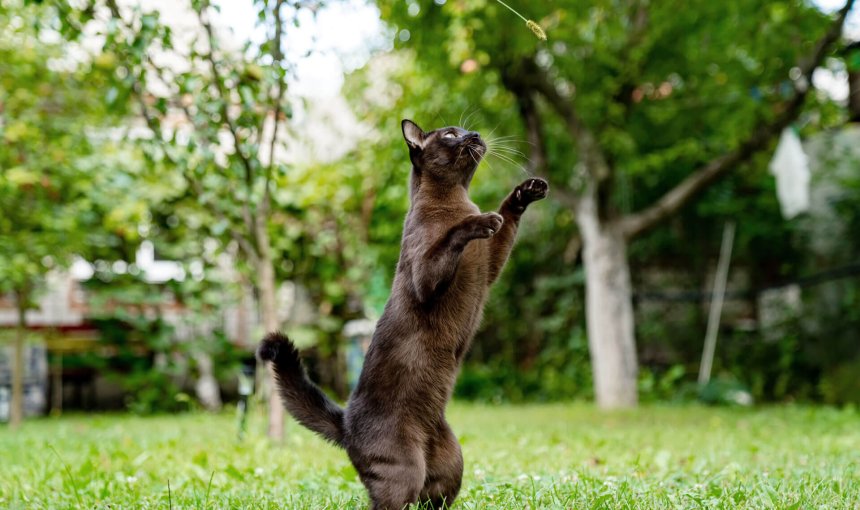
If you’re a weight-conscious person, you’re probably familiar with BMI. As in, the Body Mass Index, a tool used to identify ideal weight. Likewise, cat parents can use it to check on their feline friends’ weight and body condition. One way you can do this is by using a BMI calculator for cats. In addition to that, it’s always a good idea to double check by figuring out your cat’s Body Condition Score. What’s that, you ask? Cat Body Condition Score is a way to tell if your cat’s weight falls within a normal or healthy range, or if they might be underweight or overweight. Using this information, you can discuss things like how much your cat should eat in a day, or how to help an overweight cat lose weight. You may also want to start tracking your cat’s physical activity.
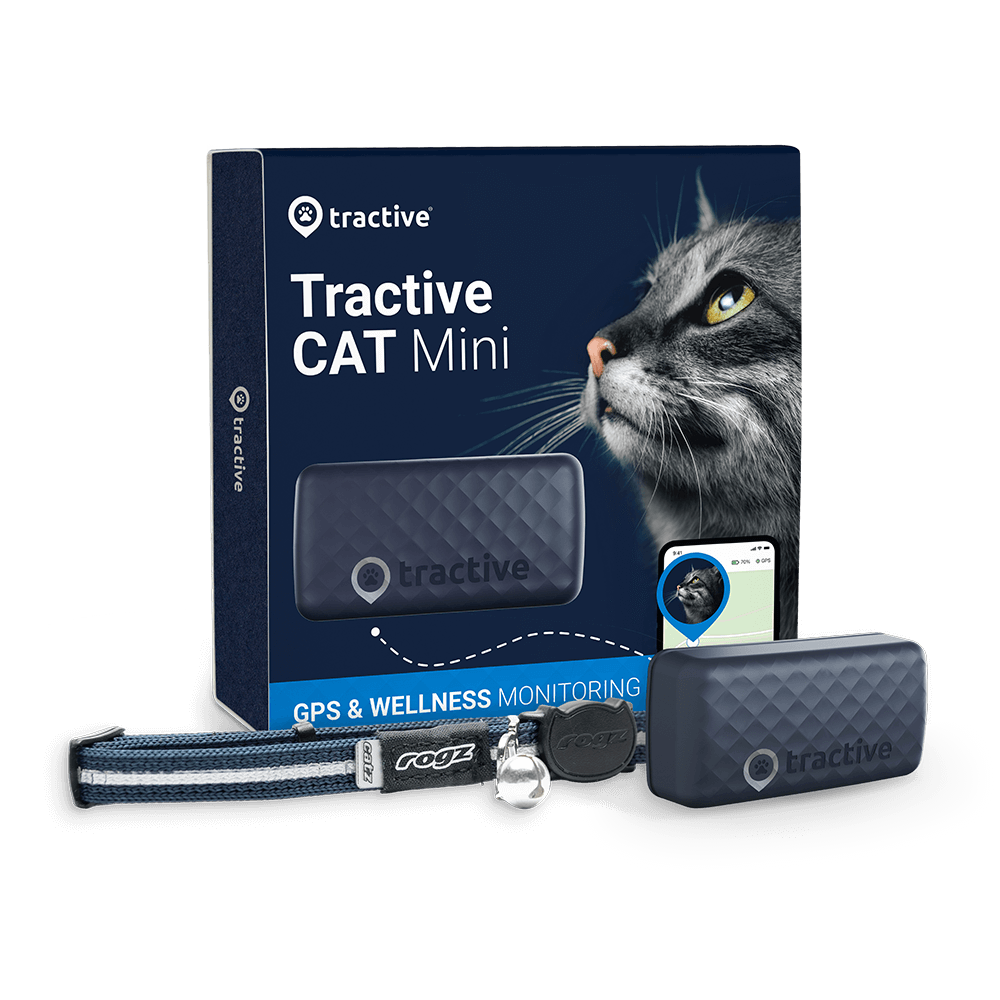
Track your cat’s wellbeing
See how they’re doing at a glance with Wellness Score. Know if they’re getting enough exercise. Spot nap patterns. Detect issues early and keep them healthy.
What is Cat Body Condition Score and how does it work?
Cat Body Condition Score (BCS) is a tool you can use to determine your cat’s body fat levels body fat levels, and see if they’re too thin, too fat, or at a healthy cat weight. It’s often used for other animals too, such as dogs or cows.
Have a dog? Check our guide on Dog Body Condition Score.
As the name suggests, BCS for cats rates a cat’s physical condition using a scale from 1 to 9. On this scale, a BCS of 1 means a cat is malnourished or emaciated (in other words, dangerously underweight) while a score of 9 indicates cat obesity.
Checking your cat’s body condition score involves using your eyes to observe your cat’s body shape, as well as feeling their rib cage gently with your hands.
- Run both hands – palms down – across your cat’s rib cage.
- Take a look at your cat from the side and above.
- Compare what you notice about your cat’s physical condition with the Body Condition Score chart for cats below.
Keep in mind that a body condition score of 4.5-5 is considered a healthy range for feline friends.
Just a note: What you see above is a shortened version of the Body Condition Score chart for cats, based on a similar chart from the World Small Animal Veterinary Association. You can read more about each rating and what it means for your cat below. For the scores left out of the chart (2, 4, 6 and 8), imagine them as a mixture of the scores above and below. For example, a cat with a body condition score of 4 will look similar to a cat with a score of 3 or 5.
Understanding your cat’s Body Condition Score
Determined your cat’s body condition score using the chart above? Great. If not, do so first before reading on. Then, see what your cat’s Body Condition Score means for you and for them.
1) Malnourished
A score of 1-2 indicates a cat is severely underweight and malnourished. You can clearly see the cat’s ribs and backbone from a distance. There is little to no body fat.
This often happen to cats who don’t have anyone caring for them, but can also affect cats who don’t eat enough food or don’t eat the right kind of food.
A cat with a Body Condition Score of 1 is in bad shape and may need medical intervention, so seek a vet’s help as soon as possible.
Warning: Cats that have not eaten for 48 hours or more can develop a liver disease called as hepatic lipidosis, which is life-threatening.2
3) Underweight
With a score of around 3, a cat is considered underweight. Ribs and backbone may be visible, and you can easily feel their ribs with your hands. There is only minimal fat covering. The cat has an obvious waist, and very minimal belly fat.
Some senior cats may take on a more “boney” look, as they often eat and move less than younger cats. They may also be facing health issues that impact their appetite and energy level.
If your cat is malnourished or underweight, we recommend the following:
- talk to a vet to rule out any underlying health issues
- monitor their eating habits
- deworm your cat
- watch out for bullying behaviors among other cats at feeding time
- consider changing their diet
- increase how many healthy protein and fat sources your cat eats
- try adding a little extra food to their bowl every day1
5) Ideal weight
A healthy cat weight is a 4 to 5 on the Body Condition Score scale. They have neither too little, nor too much fat. Their ribs can be felt, with a slight fat covering, but are not visible. There is a minimal layer of fat around the belly. They are well-proportioned, with their waist visible from above (behind the ribs).
If your cat is at an ideal weight, awesome! That’s what will be best for their health in the long term. Is your cat eating a regular, balanced diet? Are they getting enough play and physical activity? Keep up healthy behaviors to help them maintain a healthy weight.
7) Overweight
At a score of 7, it’s not easy to feel a cat’s ribs, which are covered by a moderate layer of fat. From above, it is not easy to make out the cat’s waist. The belly area is noticeably round, with a moderate fat pad around the abdomen.
This score might indicate that your cat might have started to put on weight recently, or perhaps a lifestyle change caused them to gain weight. If you notice your cat has been eating more, or is less active than usual, these behaviors may be warning signs of health issues.
Cats around middle age may naturally start to gain weight as their metabolism slows down. If you can’t identify the source of the weight gain, talk to your vet.
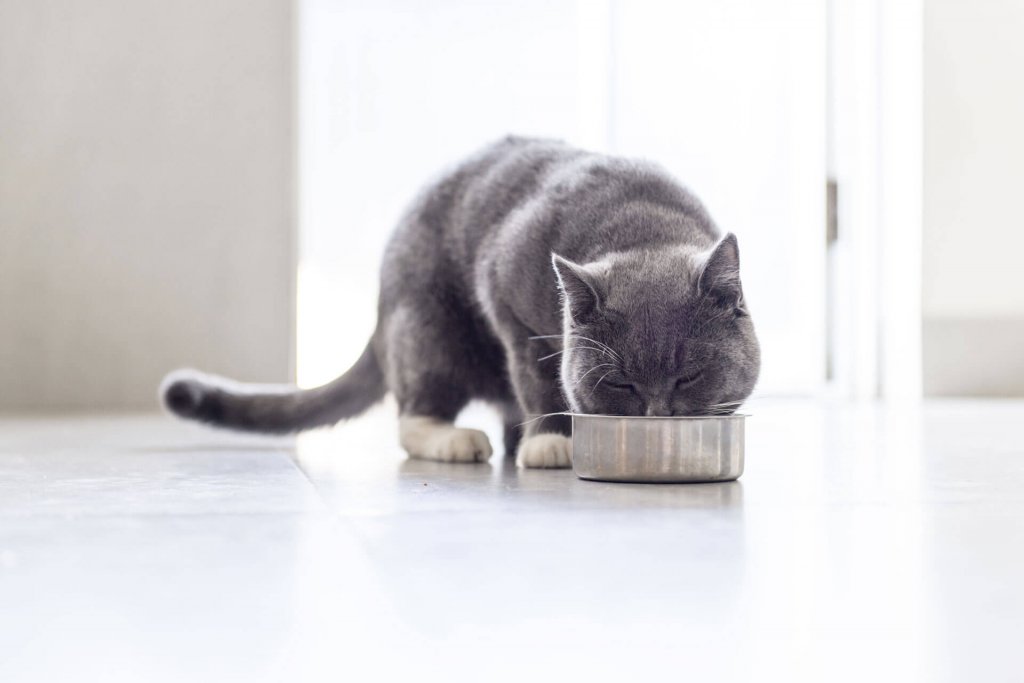
9) Obese
If you did the test above and your cat was somewhere in the 7-9 range of the Cat Body Condition Score, your cat is likely to be considered obese. At this stage, the cat’s ribs cannot be felt – they are under a heavy layer of fat. There is no visible waist from above. Instead, you can see and feel an obvious rounding of the belly and extensive fat deposits around their belly, lower back, face and legs.
Obesity is the most common nutrient-related problem in cats1.
Obese cats are susceptible to a wide range of health issues that may shorten their lives, so it’s important to take cat obesity seriously. Talk to your vet first to find the weight-reduction measures that are right for your feline. Most importantly, do not make big changes to your cat’s diet overnight. Instead, opt for small, steady steps with the help of your vet.
Read more about how to help an overweight cat lose weight.
How can I help my cat maintain a healthy weight?
Two of the main factors that will help your cat maintain a healthy weight are diet and exercise.
Diet: Make sure you are feeding your cat the right amount – and the right kinds of food. If you’re not sure which food is best for your cat, how much and how often to feed them, talk to your vet. Here are some general guidelines for feeding your cat:
- Choose high quality cat foods, preferably with protein as the main ingredient
- Feed a mix of dry and wet cat foods – dry food only is more likely to lead to obesity
- Avoid free feeding, and instead feed your cat at regular intervals through the day (4-5 small meals is recommended)
- Use a puzzle feeder to slow down feeding time
- Make sure your cat has access to fresh drinking water all the time
Exercise: Just like us, cats need plenty of physical activity to stay healthy and strong. Outdoor cats generally get more exercise than indoor cats, so if you have an indoor cat, make sure they get plenty of fun stimulation in the form of toys, games and play.
Want a fun and easy way to keep your cat in shape? You can monitor your cat’s weight, calories burned, activity and rest minutes with a Tractive GPS Cat Tracker & Activity Monitor. Plus, set fitness goals, see how active your cat is compared to others in the neighborhood. And the biggest bonus? You’ll know where your cat is at all times.
Check out the video below to see how a real vet checks the body condition score of this cat:
Did you like this post? Share it with a friend!
